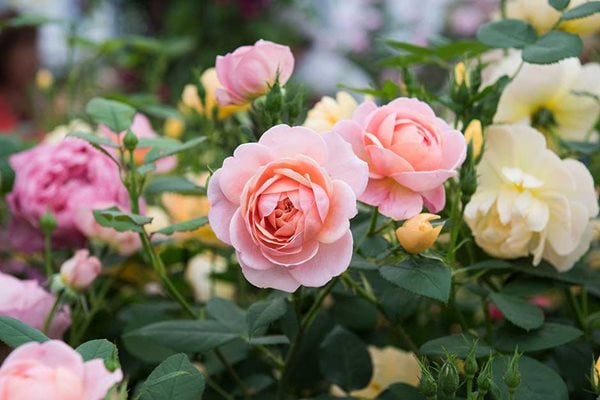Quick facts
- Flowers in summer; with many repeat-flowering into autumn
- Plants last for many years
- They love sun, although some will cope in light shade
- Plant them in rich, moist but well-drained soil
- Ideally prune them annually
- Deadhead to boost flowering
- Make new plants by taking cuttings
All you need to know
Choosing a rose
There are so many different types of roses that the choice can be a little overwhelming. To narrow down your options, consider the following:
Flowers
With roses in particular, the flowers themselves are often the deciding factor, and it’s all down to personal taste:
- Do you want the large opulent blooms of an old-fashioned rose or something more delicate and refined such as a
A hybrid plant is the offspring produced by cross-pollinating one specific cultivar with another different cultivar. This process of cross-pollination, rather than pollination between plants of the same cultivar, generally creates stronger, healthier, improved offspring, said to have ‘hybrid vigour’.
- What type of scent do you prefer? Some roses have a fruity fragrance while others have a musk or tea scent
- What colour would work well with your other plants?
For all of these aspects, but especially fragrance, it’s best to see and smell the fragrance of the plants in bloom before you buy – either at a garden centre or nursery, or when visiting gardens where they grow roses in abundance.
Eventual size
You need a plant that will fit your space. Roses can range from compact types for patio containers to huge vigorous ramblers that can grow through the branches of a tree.
Planting position
There are roses to suit almost every planting site, so assess your particular conditions which may be shady, frost-prone or have a soil that may dry out in summer – see conditions in your garden – then look for a rose that will thrive there.
For help in finding the right rose for you:
- Ask at your local garden centre, which should offer roses that do well in local conditions
- Visit a rose specialist, either at their nursery or at an RHS flower show such as Hampton Court
- Use the RHS rose selection guides. These recommend roses for a range of garden conditions
- Use our Find a Plant tool
Buying a rose
Roses are sold in three different forms:
Bare-root roses
These are a good value option, available from November to March, usually online or by mail order. The plants are dug up from open ground, the soil is removed and they are wrapped to prevent the roots drying out. Plant as soon as you can on arrival, unless your soil is frozen or waterlogged, in which case unpack and keep them in a container of damp
Can refer to either home-made garden compost or seed/potting compost: • Garden compost is a soil improver made from decomposed plant waste, usually in a compost bin or heap. It is added to soil to improve its fertility, structure and water-holding capacity. Seed or potting composts are used for growing seedlings or plants in containers - a wide range of commercially produced peat-free composts are available, made from a mix of various ingredients, such as loam, composted bark, coir and sand, although you can mix your own.
Containerised roses
These are
These have been lifted from the ground while dormant, with little or no soil around their roots. Various plants may be available bare root, including fruit trees, hedging plants and some perennials. They are generally cheaper than plants in containers, but are only available in winter/early spring, while dormant
Container-grown roses
These are available all year round. They may be a little more expensive than bare-root or containerised plants but can be planted at any time.
Top tip
Plant a rose in conditions it enjoys and it will reward you by growing healthy and strong so think about the conditions in your garden.
When to plant roses
This depends on the type of rose you have bought:
- Bare-root roses: Plant out as soon as you receive them, usually in late autumn or from late winter to early spring, while the plant is not actively growing
- Containerised roses: Plant all year round, but as soon as possible after buying
- Container-grown roses: Plant all year round, as soon as possible after buying
Avoid planting roses when the ground is frozen or waterlogged, or during drought conditions.
Where to plant roses
To get the most out of your rose, it is generally best to:
- Plant in a sunny spot, which gets at least four hours of sunlight a day
- Avoid very exposed, windy sites
- Allow enough space around the plant – about 60cm (2ft) – so it doesn’t have to compete for water and light
If you want to buy a rose for specific conditions, such as a shady north-facing wall, then please check the relevant selection section in our guide.
If you are replacing a rose, you need to take some extra steps to avoid replant disease.
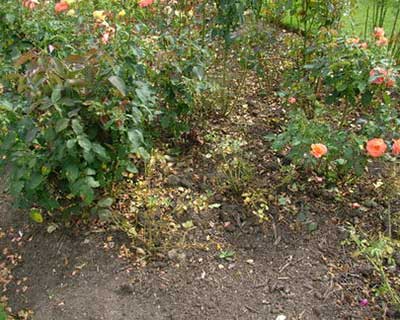
Rose replant disease
How to plant roses
Choose a position with free-draining soil, that does not dry out completely, especially during the summer months
Our planting guide takes you step by step through planting your rose.
How to plant and stake standard roses
Standard roses are top-worked (budded or grafted at the top of the stem), they should not be planted too deeply and care must be taken not to bury the stem.
- Permanent staking is important to prevent wind-rock and stabilise the heavy top of the rose
- Stake standard roses as soon as they are planted and replace stakes whenever they fail
- Check stakes and ties every year to avoid tight tree ties damaging the stems and to replace any ties that have frayed or broken
- It is best to stake using two tree ties. One as close to the crown as possible and one about halfway down the stem
- Make sure the ties have spacers positioned between the stem and the stake to avoid rubbing
- If planting in an exposed area it is a good idea to position the stake on the side of the prevailing wind
- Stakes should penetrate the soil to at least 45-60cm (18in-2ft) deep. If the stake moves in the ground, it won't anchor the plant
Pruning a standard rose
Prune the crown according to the cultivar used; Floribunda, Hybrid tea and Shrub cultivars are most commonly used although Ramblers and Ground Cover roses are available to form a weeping standard.
Shopping for a standard Rose
Standard roses are sold through RHS Plant Centres and some specialist rose nurseries to try include:
David Austin Roses
Peter Beales Roses
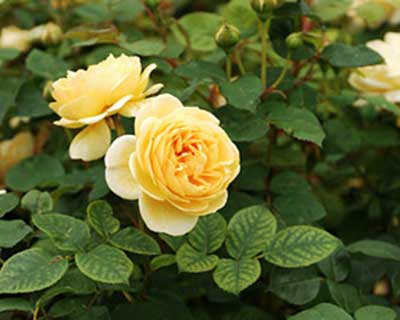
How to plant a rose in a container
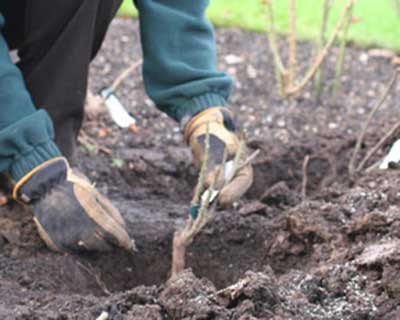
How to plant a rose
Watering
Roses are deep-rooted plants, so once they have settled in they can usually survive on the moisture naturally present in the soil. However, in hot, dry spells or in dry, sandy soils they may need additional water.
In their first few years after planting, new roses should be watered regularly, especially in summer, until their roots are well established.
How to water roses
When watering, direct the flow onto the soil around the base of the plant, avoiding the foliage and flowers. This helps to deter fungal diseases and avoid excess water use.
Roses in borders
Established roses should really only need watering during dry spells in high summer – when you should water up to once a week, using 5-10 litres (about one large watering can) per plant. If the blooms or leaves start to wilt, then water immediately.
Giving plants a good soak once a week, rather than watering lightly more often, encourages deeper rooting. This makes the plants better able to find moisture in the soil.
Roses in containers
These need much more water than plants growing in the ground. Water as often as needed, which could be daily in hot weather. Try not to let the compost dry out, but don’t let it get waterlogged either.
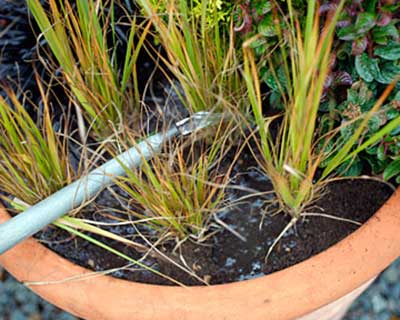
RHS guide to watering
Feeding
Roses are hungry plants and will flower and grow better if given additional feed and mulched with well-rotted manure.
How to feed roses
Roses in borders
To encourage abundant blooms, feed twice a year:
- in March/April before flowering
- in mid-summer after the first flush of flowers (especially for repeat-flowering types)
Sprinkle general-purpose or rose fertiliser on the soil around the plant, at a rate of 70g per sq m (2oz per sq yd). Then mulch the soil with well-rotted manure or garden compost, leaving a gap of 10cm (4in) around the base of the stems.
Roses in containers
These need feeding more often than roses in borders, as they have less access to nutrients.
- Feed once a fortnight from mid-spring to late summer
- Use a general-purpose liquid fertiliser until flower buds form, to encourage healthy growth
- Once flowering starts, change to a high-potash fertiliser, such as tomato feed, for more flowers
Weeding
Try to keep the soil around your rose free of weeds. Roses produce some roots near the soil surface, so avoid damaging these by hand-weeding rather than using a hoe. Just take care to stay clear of the thorns! Cover the soil with a thick layer of mulch in spring to deter annual weeds from germinating.
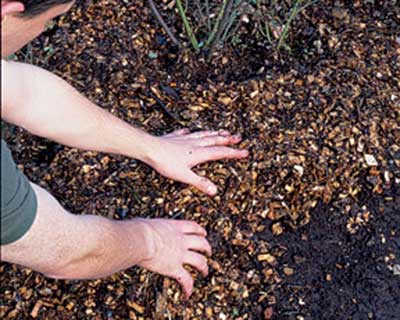
How to mulch
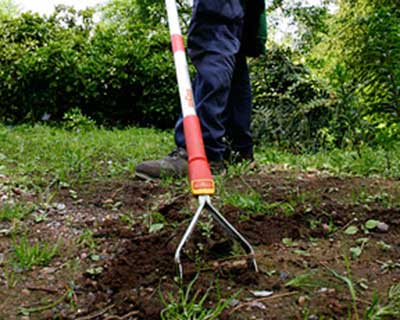
Weeds: non-chemical control
Deadheading
To encourage more blooms, snip off fading flowers once a week or so. If you don’t deadhead, many roses will form hips (seed pods) and give up making more flowers.
Some roses produce particularly decorative hips – you should stop deadheading these plants in mid-summer to give the hips time to form.
Rose hips are also a valuable winter food source for birds such as thrushes and blackbirds.
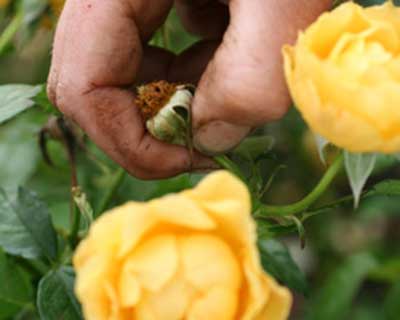
How to deadhead
The two key aims of pruning are to keep the plant healthy and shape it correctly. This is done by:
- Removing any dead, diseased or damaged shoots
- Opening up the centre of the plant to improve air circulation, which deters fungal diseases
How to prune roses
Pruning may sound tricky but is, in fact, generally quick and easy once you get the hang of it. Different types of roses need different approaches, so we’ve put together a series of step-by-step guides to show you how to get each type of rose into good shape.
You can create more plants from your favourite roses by taking cuttings, or even grow completely new plants from seed.
How to propagate roses
The easiest way is to take softwood stem-tip cuttings in early to mid spring. Take the cuttings from this year’s shoots and plant into pots, where they should root in about two months or so. The new plants will be ready to transplant into the garden after a year. Pinch out the growth to create a bushy plant and expect flowers in two to three years.
Another easy option is to take hardwood cuttings in mid-autumn to late winter. You just need to be more patient, as these are much slower to root. Once planted, the cuttings can generally be forgotten about until the following year, as the cut surface undergoes a period of callusing over in winter, from which roots then start to develop in spring.
Other methods of propagation are possible – including T-budding, suckers and layering – but are trickier and not usually used by home gardeners for roses. Growing roses from seed can be fun, but is time consuming and quite challenging and most reliable with species and wild roses.
Please be aware that some roses are protected by Plant Breeders’ Rights, and you are not allowed to propagate them for sale. Also, some roses may be grafted onto specific rootstock to control the plant’s size, so the rose you grow from a cutting may not perform in the same way as the parent plant.
Learn more about propagation tehniques and growing trees and shrubs from seed
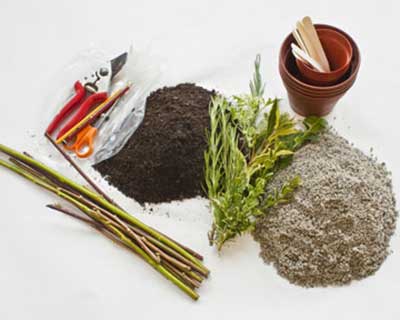
Propagation techniques
Tackling rose problems
Roses can suffer from a range of pests, diseases and disorders, so some care and vigilance is needed to prevent or control them.
The most common rose problems are:
If you’re not sure what’s wrong with your rose, then this guide on frequently asked rose problem questions is a good place to start.
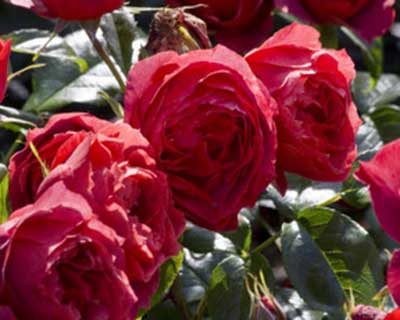
Rose problems: Frequently Asked Questions
Or if you’re a member of the RHS, you can use our online Gardening Advice service, via MyRHS.
Shop for Roses with the RHSplants.co.uk
See our full range of roses, carefully chosen & grown for best results in your garden
Get involved
The Royal Horticultural Society is the UK’s leading gardening charity. We aim to enrich everyone’s life through plants, and make the UK a greener and more beautiful place.
